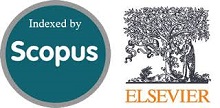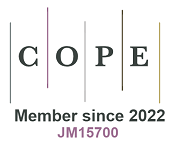Evaluating the Determinants of Young Runners' Continuance Intentions toward Wearable Devices
Abstract
Doi: 10.28991/HIJ-2023-04-04-02
Full Text: PDF
Keywords
References
Xie, J., Chen, Q., Shen, H., & Li, G. (2020). Wearable graphene devices for sensing. Journal of the Electrochemical Society, 167(3), 037541. doi:10.1149/1945-7111/ab67a4.
Bhatti, D. S., Saleem, S., Imran, A., Iqbal, Z., Alzahrani, A., Kim, H. J., & Kim, K. I. (2022). A Survey on Wireless Wearable Body Area Networks: A Perspective of Technology and Economy. Sensors, 22(20), 7722. doi:10.3390/s22207722.
Lunney, A., Cunningham, N. R., & Eastin, M. S. (2016). Wearable fitness technology: A structural investigation into acceptance and perceived fitness outcomes. Computers in Human Behavior, 65, 114–120. doi:10.1016/j.chb.2016.08.007.
Kang, M. J., & Hwang, Y. C. (2022). Exploring the Factors Affecting the Continued Usage Intention of IoT-Based Healthcare Wearable Devices Using the TAM Model. Sustainability (Switzerland), 14(19), 12492. doi:10.3390/su141912492.
Chau, K. Y., Lam, M. H. S., Cheung, M. L., Tso, E. K. H., Flint, S. W., Broom, D. R., Tse, G., & Lee, K. Y. (2019). Smart technology for healthcare: Exploring the antecedents of adoption intention of healthcare wearable technology. Health Psychology Research, 7(1). doi:10.4081/hpr.2019.8099.
Cosoli, G., Antognoli, L., Veroli, V., & Scalise, L. (2022). Accuracy and Precision of Wearable Devices for Real-Time Monitoring of Swimming Athletes. Sensors, 22(13), 4726. doi:10.3390/s22134726.
Gopinath, K., Selvam, G., & Narayanamurthy, G. (2022). Determinants of the Adoption of Wearable Devices for Health and Fitness: A Meta-analytical Study. Communications of the Association for Information Systems, 50(1), 445–480. doi:10.17705/1CAIS.05019.
Davis, F. D., Bagozzi, R. P., & Warshaw, P. R. (1989). User Acceptance of Computer Technology: A Comparison of Two Theoretical Models. Management Science, 35(8), 982–1003. doi:10.1287/mnsc.35.8.982.
Yang, H., Yu, J., Zo, H., & Choi, M. (2016). User acceptance of wearable devices: An extended perspective of perceived value. Telematics and Informatics, 33(2), 256–269. doi:10.1016/j.tele.2015.08.007.
D’Ambrosi, L. (2017). The global active citizenship network in Italian local contexts: Using social media to promote sustainable behaviours. Javnost-The Public, 24(1), 34-48. doi:10.1080/13183222.2017.1267161.
Zhao, H., & Khan, A. (2022). The Students’ Flow Experience with the Continuous Intention of Using Online English Platforms. Frontiers in Psychology, 12, 807084–807084. doi:10.3389/fpsyg.2021.807084.
Ajzen, I. (2012). The theory of planned behavior. Handbook of Theories of Social Psychology: Volume 1, 50(2), 438–459. doi:10.4135/9781446249215.n22.
Jung, T., Claudia Tom Dieck, M., Lee, H., & Chung, N. (2020). Relationships among beliefs, attitudes, time resources, subjective norms, and intentions to use wearable augmented reality in art galleries. Sustainability (Switzerland), 12(20), 1–17. doi:10.3390/su12208628.
Tao, Y. T., Lin, M. Der, & Khan, A. (2022). The impact of CSR on green purchase intention: Empirical evidence from the green building Industries in Taiwan. Frontiers in Psychology, 13. doi:10.3389/fpsyg.2022.1055505.
Xu, Y., Wang, Y., Khan, A., & Zhao, R. (2021). Consumer Flow Experience of Senior Citizens in Using Social Media for Online Shopping. Frontiers in Psychology, 12. doi:10.3389/fpsyg.2021.732104.
Davis, F. D. (1993). User acceptance of information technology: system characteristics, user perceptions and behavioral impacts. International Journal of Man-Machine Studies, 38(3), 475–487. doi:10.1006/imms.1993.1022.
Kim, K. J., & Shin, D. H. (2015). An acceptance model for smart watches: Implications for the adoption of future wearable technology. Internet Research, 25(4), 527–541. doi:10.1108/IntR-05-2014-0126.
Howard, M. C., & Hair, J. F. (2023). Integrating the Expanded Task-technology Fit Theory and the Technology Acceptance Model: A Multi-wave Empirical Analysis. AIS Transactions on Human-Computer Interaction, 15(1), 83–110. doi:10.17705/1thci.00084.
Lu, K., Pang, F., & Shadiev, R. (2023). Understanding college students’ continuous usage intention of asynchronous online courses through extended technology acceptance model. Education and Information Technologies, 28(8), 9747–9765. doi:10.1007/s10639-023-11591-1.
An, S., Eck, T., & Yim, H. (2023). Understanding Consumers’ Acceptance Intention to Use Mobile Food Delivery Applications through an Extended Technology Acceptance Model. Sustainability (Switzerland), 15(1), 832. doi:10.3390/su15010832.
Jariyapan, P., Mattayaphutron, S., Gillani, S. N., & Shafique, O. (2022). Factors Influencing the Behavioural Intention to Use Cryptocurrency in Emerging Economies During the COVID-19 Pandemic: Based on Technology Acceptance Model 3, Perceived Risk, and Financial Literacy. Frontiers in Psychology, 12, 5935. doi:10.3389/fpsyg.2021.814087.
Mustafa, A. S., Alkawsi, G. A., Ofosu-Ampong, K., Vanduhe, V. Z., Garcia, M. B., & Baashar, Y. (2022). Gamification of E-learning in African universities: Identifying adoption factors through task-technology fit and technology acceptance model. In Next-Generation Applications and Implementations of Gamification Systems, Issue April, 73–96.
Park, E., & Del Pobil, A. P. (2013). Technology acceptance model for the use of tablet PCs. Wireless Personal Communications, 73(4), 1561–1572. doi:10.1007/s11277-013-1266-x.
Joo, J., & Sang, Y. (2013). Exploring Koreans’ smartphone usage: An integrated model of the technology acceptance model and uses and gratifications theory. Computers in Human Behavior, 29(6), 2512–2518. doi:10.1016/j.chb.2013.06.002.
Kim, K. J., & Sundar, S. S. (2014). Does screen size matter for smartphones? Utilitarian and hedonic effects of screen size on smartphone adoption. Cyber psychology, Behavior, and Social Networking, 17(7), 466–473. doi:10.1089/cyber.2013.0492.
Park, E., & Kim, K. J. (2014). An integrated adoption model of mobile cloud services: Exploration of key determinants and extension of technology acceptance model. Telematics and Informatics, 31(3), 376–385. doi:10.1016/j.tele.2013.11.008.
Jung, Y. (2011). Understanding the role of sense of presence and perceived autonomy in users’ continued use of social virtual worlds. Journal of Computer-Mediated Communication, 16(4), 492–510. doi:10.1111/j.1083-6101.2011.01540.x.
Ku, W. T., Lai, H. M., & Hsieh, P. J. (2020). Understanding continuous wearable technology use behavior for fitness and self–health management among middle-aged and elderly people. Lecture Notes in Computer Science (Including Subseries Lecture Notes in Artificial Intelligence and Lecture Notes in Bioinformatics), 12207 LNCS, 280–288. doi:10.1007/978-3-030-50252-2_21.
Lee, M. C. (2010). Explaining and predicting users’ continuance intention toward e-learning: An extension of the expectation-confirmation model. Computers and Education, 54(2), 506–516. doi:10.1016/j.compedu.2009.09.002.
Lu, Y., Zhou, T., & Wang, B. (2009). Exploring Chinese users’ acceptance of instant messaging using the theory of planned behavior, the technology acceptance model, and the flow theory. Computers in Human Behavior, 25(1), 29–39. doi:10.1016/j.chb.2008.06.002.
Hsieh, P. J. (2015). Physicians’ acceptance of electronic medical records exchange: An extension of the decomposed TPB model with institutional trust and perceived risk. International Journal of Medical Informatics, 84(1), 1–14. doi:10.1016/j.ijmedinf.2014.08.008.
Lee, Y., Kozar, K. A., & Larsen, K. R. (2003). The technology acceptance model: Past, present, and future. Communications of the Association for information systems, 12(1), 50.
Davis, F. D. (1989). Perceived usefulness, perceived ease of use, and user acceptance of information technology. MIS Quarterly: Management Information Systems, 13(3), 319–339. doi:10.2307/249008.
Ajzen, I., & Fishbein, M. (1975). A Bayesian analysis of attribution processes. Psychological Bulletin, 82(2), 261–277. doi:10.1037/h0076477.
Venkatesh, V., & Davis, F. D. (2000). Theoretical extension of the Technology Acceptance Model: Four longitudinal field studies. Management Science, 46(2), 186–204. doi:10.1287/mnsc.46.2.186.11926.
Bhattacherjee, A. (2017). Understanding information systems continuance Understanding information systems continuance : an expectation-confirmation model. MIS Quarterly, 2017148.
Amoroso, D., & Lim, R. (2017). The mediating effects of habit on continuance intention. International Journal of Information Management, 37(6), 693–702. doi:10.1016/j.ijinfomgt.2017.05.003.
Yu, Z., & Huang, Y. (2022). The Influencing Factors of Users’ Attitudes and Continuance Intention for Olympic Viewing on Mobile Applications in China. Systems, 10(5), 190. doi:10.3390/systems10050190.
Song, J., Kim, J., & Cho, K. (2018). Understanding users’ continuance intentions to use smart-connected sports products. Sport Management Review, 21(5), 477–490. doi:10.1016/j.smr.2017.10.004.
Cheung, M. L., Leung, W. K. S., & Chan, H. (2020). Driving healthcare wearable technology adoption for Generation Z consumers in Hong Kong. Young Consumers, 22(1), 10–27. doi:10.1108/YC-04-2020-1123.
Gupta, A., Dhiman, N., Yousaf, A., & Arora, N. (2021). Social comparison and continuance intention of smart fitness wearables: an extended expectation confirmation theory perspective. Behaviour & Information Technology, 40(13), 1341-1354. doi:10.1080/0144929X.2020.1748715.
Zaremohzzabieh, Z., Samah, B. A., Muhammad, M., Omar, S. Z., Bolong, J., Hassan, M. S., & Shaffril, H. A. M. (2015). A Test of the Technology Acceptance Model for Understanding the ICT Adoption Behavior of Rural Young Entrepreneurs. International Journal of Business and Management, 10(2), 158–169. doi:10.5539/ijbm.v10n2p158.
Ashfaq, M., Yun, J., Yu, S., & Loureiro, S. M. C. (2020). I, Chatbot: Modeling the determinants of users’ satisfaction and continuance intention of AI-powered service agents. Telematics and Informatics, 54, 101473. doi:10.1016/j.tele.2020.101473.
Hung, S. W., Chang, C. W., & Ma, Y. C. (2021). A new reality: Exploring continuance intention to use mobile augmented reality for entertainment purposes. Technology in Society, 67, 101757. doi:10.1016/j.techsoc.2021.101757.
Venkatesh, V. (2000). Determinants of Perceived Ease of Use: Integrating Control, Intrinsic Motivation, and Emotion into the Technology Acceptance Model. Information Systems Research, 11(4), 342–365. doi:10.1287/isre.11.4.342.11872.
Ajzen, I., & Driver, B. L. (1992). Application of the Theory of Planned Behavior to Leisure Choice. Journal of Leisure Research, 24(3), 207–224. doi:10.1080/00222216.1992.11969889.
Zhu, Y., Dailey, S. L., Kreitzberg, D., & Bernhardt, J. (2017). “Social Net Workout”: Connecting Social Features of Wearable Fitness Trackers with Physical Exercise. Journal of Health Communication, 22(12), 974–980. doi:10.1080/10810730.2017.1382617.
Ajzen, I. (2002). Perceived behavioral control, self-efficacy, locus of control, and the theory of planned behavior. Journal of Applied Social Psychology, 32(4), 665–683. doi:10.1111/j.1559-1816.2002.tb00236.x.
Sonne, T., & Jensen, M. M. (2014). Race by hearts: Using technology to facilitate enjoyable and social workouts. Lecture Notes in Computer Science (Including Subseries Lecture Notes in Artificial Intelligence and Lecture Notes in Bioinformatics), 8770, 125–132. doi:10.1007/978-3-662-45212-7_16.
Mauriello, M. L., Gubbels, M., & Froehlich, J. E. (2014). Social fabric fitness: The design and evaluation of wearable E-textile displays to support group running. Conference on Human Factors in Computing Systems - Proceedings, 2833–2842. doi:10.1145/2556288.2557299.
Hassan, L., Dias, A., & Hamari, J. (2019). How motivational feedback increases user’s benefits and continued use: A study on gamification, quantified-self and social networking. International Journal of Information Management, 46, 151–162. doi:10.1016/j.ijinfomgt.2018.12.004.
Yang, N., van Hout, G., Feijs, L., Chen, W., & Hu, J. (2020). Facilitating physical activity through on-site quantified-self data sharing. Sustainability (Switzerland), 12(12), 4904. doi:10.3390/SU12124904.
Jin, H., Yan, J., Zhang, Y., & Zhang, H. (2023). Research on the influence mechanism of users’ quantified-self immersive experience: on the convergence of mobile intelligence and wearable computing. Personal and Ubiquitous Computing, 27(3), 1111–1122. doi:10.1007/s00779-020-01484-2.
Jin, H., Peng, Y., Chen, J., & Park, S. T. (2022). Research on the Connotation and Dimension of Consumers’ Quantified-Self Consciousness. Sustainability (Switzerland), 14(3), 1504. doi:10.3390/su14031504.
Hair, J. F., Risher, J. J., Sarstedt, M., & Ringle, C. M. (2019). When to use and how to report the results of PLS-SEM. European Business Review, 31(1), 2–24. doi:10.1108/EBR-11-2018-0203.
Hair Jr, J. F., Black, W. C., Babin, B. J., & Anderson, R. E. (2010). Multivariate Data Analysis. Pearson Prentice, New Jersey, United States.
Fornell, C., & Larcker, D. F. (1981). Evaluating Structural Equation Models with Unobservable Variables and Measurement Error. Journal of Marketing Research, 18(1), 39. doi:10.2307/3151312.
Chen, C. C., Khan, A., Hongsuchon, T., Ruangkanjanases, A., Chen, Y. T., Sivarak, O., & Chen, S. C. (2021). The role of corporate social responsibility and corporate image in times of crisis: The mediating role of customer trust. International Journal of Environmental Research and Public Health, 18(16), 8275. doi:10.3390/ijerph18168275.
Hu, L. T., & Bentler, P. M. (1999). Cutoff criteria for fit indexes in covariance structure analysis: Conventional criteria versus new alternatives. Structural Equation Modeling, 6(1), 1–55. doi:10.1080/10705519909540118.
Henseler, J., Hubona, G., & Ray, P. A. (2016). Using PLS path modeling in new technology research: Updated guidelines. Industrial Management and Data Systems, 116(1), 2–20. doi:10.1108/IMDS-09-2015-0382.
Hair, J. F., Hult, G. T. M., Ringle, C. M., Sarstedt, M., & Thiele, K. O. (2017). Mirror, mirror on the wall: a comparative evaluation of composite-based structural equation modeling methods. Journal of the academy of marketing science, 45, 616-632. doi:10.1007/s11747-017-0517-x.
Harman, H. H. (1976). Modern Factor Analysis. University of Chicago Press, Chicago, United States.
Chin W, M. G. (1998). The Partial Least Squares Approach to Structural Formula Modeling. Advances in Hospitality and Leisure, 8(2), 5.
Hair, J. F., Sarstedt, M., Pieper, T. M., & Ringle, C. M. (2012). The Use of Partial Least Squares Structural Equation Modeling in Strategic Management Research: A Review of Past Practices and Recommendations for Future Applications. Long Range Planning, 45(5–6), 320–340. doi:10.1016/j.lrp.2012.09.008.
Wetzels, M., Odekerken-Schröder, G., & Van Oppen, C. (2009). Using PLS path modeling for assessing hierarchical construct models: Guidelines and empirical illustration. MIS Quarterly: Management Information Systems, 33(1), 177–196. doi:10.2307/20650284.
Chang, H. S., Lee, S. C., & Ji, Y. G. (2016). Wearable device adoption model with TAM and TTF. International Journal of Mobile Communications, 14(5), 518–537. doi:10.1504/IJMC.2016.078726.
Ong, A. K. S., Prasetyo, Y. T., Robas, K. P. E., Persada, S. F., Nadlifatin, R., Matillano, J. S. A., Macababbad, D. C. B., Pabustan, J. R., & Taningco, K. A. C. (2023). Determination of Factors Influencing the Behavioral Intention to Play “Mobile Legends: Bang-Bang” during the COVID-19 Pandemic: Integrating UTAUT2 and System Usability Scale for a Sustainable e-Sport Business. Sustainability (Switzerland), 15(4), 3170. doi:10.3390/su15043170.
Lee, S. Y., & Lee, K. (2018). Factors that influence an individual’s intention to adopt a wearable healthcare device: The case of a wearable fitness tracker. Technological Forecasting and Social Change, 129, 154–163. doi:10.1016/j.techfore.2018.01.002.
Venkatesh, V., & Bala, H. (2008). Technology acceptance model 3 and a research agenda on interventions. Decision Sciences, 39(2), 273–315. doi:10.1111/j.1540-5915.2008.00192.x.
Liao, C., Chen, J. L., & Yen, D. C. (2007). Theory of planning behavior (TPB) and customer satisfaction in the continued use of e-service: An integrated model. Computers in Human Behavior, 23(6), 2804–2822. doi:10.1016/j.chb.2006.05.006.
Hogg, M. A., & Smith, J. R. (2007). Attitudes in social context: A social identity perspective. European Review of Social Psychology, 18(1), 89–131. doi:10.1080/10463280701592070.
Jain, K., Sharma, I., & Singh, G. (2018). An empirical study of factors determining wearable fitness tracker continuance among actual users. International Journal of Technology Marketing, 13(1), 83–109. doi:10.1504/IJTMKT.2018.099877.
Ferreira, J. J., Fernandes, C. I., Rammal, H. G., & Veiga, P. M. (2021). Wearable technology and consumer interaction: A systematic review and research agenda. Computers in Human Behavior, 118, 106710. doi:10.1016/j.chb.2021.106710.
Tweneboah-Koduah, E. Y., Adams, M., & Acheampong, G. (2019). The role of theories in social marketing in predicting physical activity behavior among the youth. Journal of Social Marketing, 9(4), 398–417. doi:10.1108/JSOCM-01-2018-0005.
Lee, V. R., Drake, J., Cain, R., & Thayne, J. (2021). Remembering What Produced the Data: Individual and Social Reconstruction in the Context of a Quantified Self Elementary Data and Statistics Unit. Cognition and Instruction, 39(4), 367–408. doi:10.1080/07370008.2021.1936529.
Gilmore, J. N. (2016). Everywear: The quantified self and wearable fitness technologies. New Media and Society, 18(11), 2524–2539. doi:10.1177/1461444815588768.
Chun, H., Lee, H., & Kim, D. (2012). The integrated model of smartphone adoption: Hedonic and utilitarian value perceptions of smartphones among Korean college students. Cyber psychology, Behavior, and Social Networking, 15(9), 473–479. doi:10.1089/cyber.2012.0140.
Shin, D. H., & Biocca, F. (2017). Health experience model of personal informatics: The case of a quantified self. Computers in Human Behavior, 69, 62–74. doi:10.1016/j.chb.2016.12.019.
Al-Adwan, A. S., Li, N., Al-Adwan, A., Abbasi, G. A., Albelbisi, N. A., & Habibi, A. (2023). “Extending the Technology Acceptance Model (TAM) to Predict University Students’ Intentions to Use Metaverse-Based Learning Platforms”. Education and Information Technologies, 28(11), 15381–15413. doi:10.1007/s10639-023-11816-3.
Almaiah, M. A., Al-Otaibi, S., Lutfi, A., Almomani, O., Awajan, A., Alsaaidah, A., Alrawad, M., & Awad, A. B. (2022). Employing the TAM Model to Investigate the Readiness of M-Learning System Usage Using SEM Technique. Electronics (Switzerland), 11(8), 1259. doi:10.3390/electronics11081259.
Khurana, A., Kumar, V. V. R., & Sidhpuria, M. (2020). A Study on the Adoption of Electric Vehicles in India: The Mediating Role of Attitude. Vision, 24(1), 23–34. doi:10.1177/0972262919875548.
Anser, M. K., Zaigham, G. H. K., Imran Rasheed, M., Pitafi, A. H., Iqbal, J., & Luqman, A. (2020). Social media usage and individuals’ intentions toward adopting Bitcoin: The role of the theory of planned behavior and perceived risk. International Journal of Communication Systems, 33(17), 4590. doi:10.1002/dac.4590.
DOI: 10.28991/HIJ-2023-04-04-02
Refbacks
- There are currently no refbacks.
Copyright (c) 2023 Zhaoxia Guo, Guoqing Liu, Zhiguo Liu, Asif Khan









